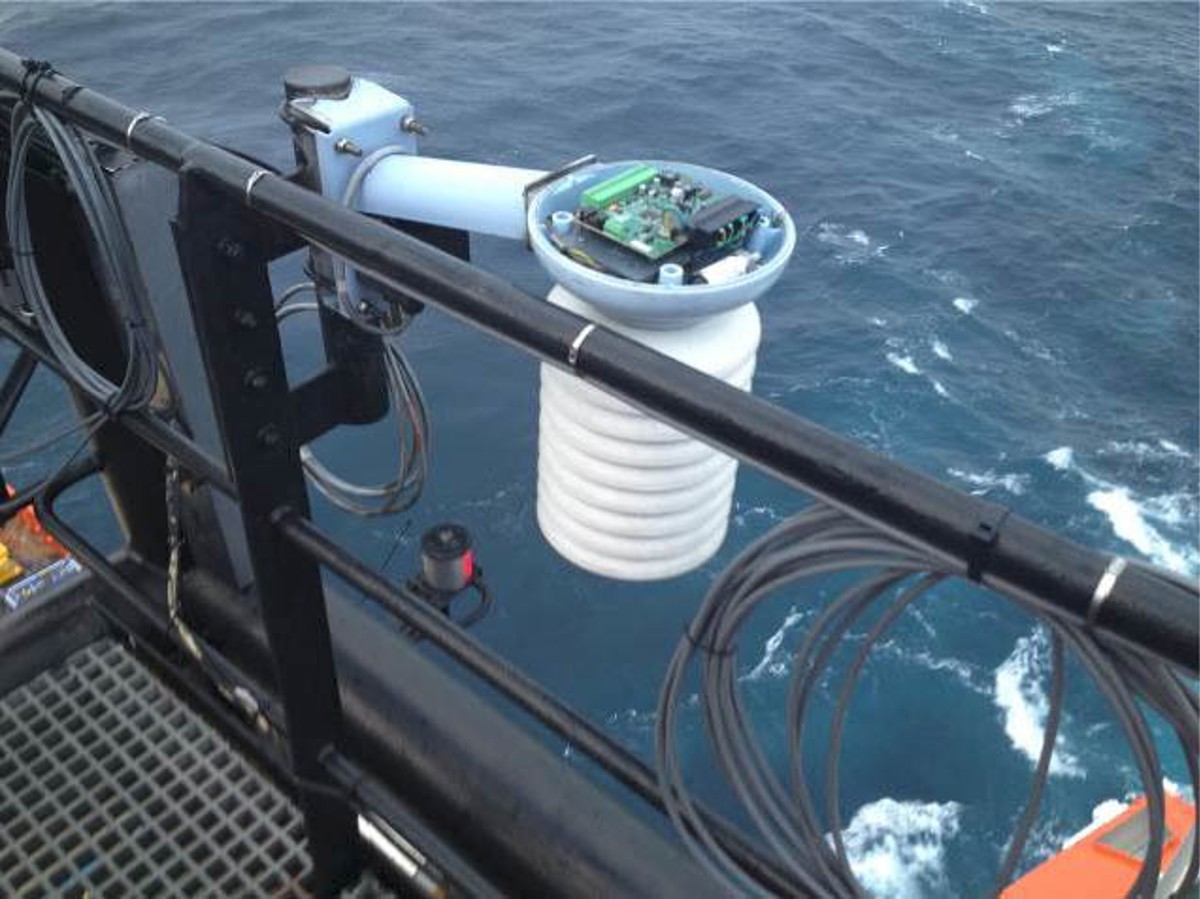Dropped object near-miss: wind sensor
- Safety Flash
- Published on 4 September 2013
- Generated on 23 December 2025
- IMCA SF 13/13
- 2 minute read
Jump to:
A Member has reported an incident in which part of a plastic fixed unit wind sensor weighing 0.8 kg dropped 10 m to the top of the bridge roof.
The wind sensor fell from the top of the aerial deck to the top of the bridge deck. At the time of the incident there were no works taking place on the ROV deck or on the roof of the bridge; there were no injuries. Weather conditions at the time were gusting southerly winds at 11 m/s or 21.3 knots, and the vessel was heading into the wind.
Use of the ‘DROPS calculator’ for this dropped object showed that the potential had it actually hit a person was for a major LTI.
Figure 1 - Showing where wind sensor fell, from the top of the aerial deck to the top of the bridge deck

Figure 2 - Showing wind sensor in situ without its lid

Figure 3 - Showing the lid of the wind sensor (weight 0.8 kg)
Actions
Our Member took the following steps:
- Ensured that all vessel departments have a robust DROPPED Objects inspection regime in place.
- Ensured that all equipment at height is in a planned preventative maintenance programme.
- Checked fixed unit equipment to ensure that integral fixings are in place (if possible check securing means).
Members’ attention is drawn to the following IMCA material which may be of assistance:
- Avoiding dropped objects (poster, pocket card)
IMCA Safety Flashes summarise key safety matters and incidents, allowing lessons to be more easily learnt for the benefit of the entire offshore industry.
The effectiveness of the IMCA Safety Flash system depends on the industry sharing information and so avoiding repeat incidents. Incidents are classified according to IOGP's Life Saving Rules.
All information is anonymised or sanitised, as appropriate, and warnings for graphic content included where possible.
IMCA makes every effort to ensure both the accuracy and reliability of the information shared, but is not be liable for any guidance and/or recommendation and/or statement herein contained.
The information contained in this document does not fulfil or replace any individual's or Member's legal, regulatory or other duties or obligations in respect of their operations. Individuals and Members remain solely responsible for the safe, lawful and proper conduct of their operations.
Share your safety incidents with IMCA online. Sign-up to receive Safety Flashes straight to your email.
